
12 July 2010 Hasan Sarbakhshian
For many years the possibility of fragmentation in Iran has instilled fear in all those interested in the future of the country. This fear is particularly strong whenever the country’s internal state of affairs becomes fraught with disarray and disorder, and as a result, the border inhabitants face further discrimination and pressure by the government. The question of whether some Iranian ethnic groups favor separatism and independence from the rest of the country or prefer federalism reminds me of certain memories.
During my numerous trips to refugee camps in Iran and Iraq, I came across Ramadi, an Iraqi town close to the Syrian border. Thousands of Iranian Kurds displaced by the Iran-Iraq war had set up a camp site there called Altash under Saddam Hussein’s rule. Saddam never stopped pressuring these refugees to participate in the war against Iran. But out of empathy with Iran, these Kurds never conceded to such demands. My arrival at Altash in April 2003 coincided with the marching of American soldiers into the refugee camp after they defeated Saddam and took over Iraq. The welcoming gestures of those Iranian prisoners of war were not surprising to me although I could not stop wondering about their reason for choosing Iraq over Iran a long time ago. Did they simply have no other options? Very soon I received my answer. The majority of those Kurds were members of the Kurdistan Democratic Party of Iran (KDPI) whose leader, Dr. Abdulrahman Ghassemlou, was assassinated in 1989 at a meeting with Iranian officials in an apartment in Vienna.
Listening to the perspectives of Iran’s different ethnic groups will be an important part of the evolution of the Green Movement. A democratic Iran will need to genuinely embrace their demands, not listen and then fail to act. At the same time, advocates for Iran’s ethnic groups will need to speak the language of democracy and civil resistance, not use the language of martyrdom and violence.
The KDPI was formed by the Ghazi brothers sixty five years ago when the northern region of Iran came under Russian occupation. The party formally declared its existence under the leadership of Ghazi Mohammad in the city of Mahabad. The party’s chief concern was to gain autonomy for Kurdistan following the formation of the independent government of Azerbaijan by Seyyed Jafar Pishevari, which the Russians supported. Exactly one year later, with the military intervention by the central government of the time, the movement was crushed and the integrity of the country was preserved. But during the last few decades, the Iranian government has always been addressed with more or less similar demands from various ethnic groups; demands ranging from complete separation to living together under constitutional federalism. It has now been a number of years since the KDPI has been pursuing a form of federalism in Iran. According to Kaveh Ahangari, who is in charge of the party’s public relations in the European Union, federalism has been their official position since the assassination of Dr. Sharafkandi in the 1992 Mykonos shooting in Berlin.
A closer look at the Green Movement in Iran shows that the movement is limited to the capital while the cities that are under more pressure and face greater discrimination have remained silent. Mohsen Rezaie, a former head of the Islamic Revolutionary Guards Corps and a presidential candidate, believes in economical federalism and advocated federalism as part of his electoral campaign last year. Mahmoud Ahmadinejad, in his turn, called the idea interesting but problematic because of the administrative divisions that the country faces. Overall, the subject is still considered a taboo inside Iran, so much so that intellectuals, civil rights activists, and political activists refer to it cautiously. Federalism may indeed prove to be a better model of government than others; particularly when the Kurdish Iranian refugees in Iraq have taken it upon themselves to teach their children Persian with the help of textbooks published by the Islamic Republic, despite Saddam’s opposition to any representation of their Iranian identity and his compulsory distribution of Iraqi identity cards. Under such conditions, the Kurds have shared textbooks for years and according to them, even under Saddam’s rule, they secretly continued their Persian studies.
Meanwhile, it could be productive to hold conversations with Baluch, Azeri, Kurdish, and Arab activists who have similar demands when it comes to federalism considering the shared borders between these minorities and Iran’s neighbors, and in view of their lack of participation in the Green Movement on its first anniversary. Any negligence or disregard for the demands and grievances of other ethnicities by the capital dwellers may cause irreparable divisions in the future. Moreover, should Iran disintegrate, considering that natural resources and the access to northern and southern waterways are distributed among the Arabs, Kurds, Azeris, and the Baluch, what would remain for the inhabitants of the capital would be limited to the deserts in central Iran, which would be disastrous for a country with such a vast historical legacy.
During the past years, the negative impression imposed upon Iranian ethnic groups has conveyed a sense that they are adopted children of a larger family as opposed to natural offsprings. Such an approach leads to people like Dr. Hossein Bor, a U.S.-based Baluch activist and lawyer to label Abdulmalek Rigi’s execution by the Islamic Republic “martyrdom.” According to Dr. Bor, the method used by the Islamic Republic in stating opposition to the Baluchis encouraged the Baluchis to support Abdulmalek Rigi. At the outset of the interview, Dr. Bor claimed Rigi was a ”martyr” and said he died as a result of torture at the hands of the Islamic regime, whereas the regime claims they executed him. Although most human rights activists believe that Rigi was a terrorist, we asked Dr. Bor if he believed Rigi’s violent methods against the regime were justified. He answered, “I believe in using civil and peaceful methods, but it should be clarified that Mr. Rigi participated in an armed struggle, and not an armed resistance; I believe in international laws and laws related to defensive rights should also be recognized.”
If Iranian ethnic groups forge an alliance to pursue their demands, and if such an alliance is ignored by the central government, this could lead to the disintegration of the country in a way that nothing of Iran, not even its name, would survive. For this reason, I conducted interviews with Dr. Karim Abdian, a human rights activist from Ahvaz, Habib Azarsina, an Azerbaijani human rights activist, and Kaveh Ahangari, a representative of the KDPI in the European Union. I asked them about the reasons behind the lack of participation by other ethnic groups in the Green Movement on its one year anniversary.
Dr. Abdian mentions two reasons for the Green Movement’s unsuccessful campaign outside of Tehran: the Movement leaders’ lack of plans on behalf of the Arabs, Azeris, Kurds, and the Baluch and their unknown status in the future of the Movement. He emphasizes that despite all the limitations faced by ethnic minorities, a young Arab man by the name of Yaghub Bervayeh was killed along with Neda Agha Soltan during last year’s demonstrations. Dr. Abdian believes that both during the Shah’s reign and under Islamic rule, the Arabs have been mistreated and suppressed. He says, “We should be able to tolerate a multinational Iran and the Movement’s leaders should know that Iran is not limited to Tehran; Kurdistan, Khouzistan, Turkman Sahra, and Azerbaijan too should be counted as they have many languages and cultures but have always been under suppression. Dr. Abdian continues, “The Arabs, Kurds, and the Baluch have always been under double oppression and the leadership of the Movement has not been able to meet their demands and that is why the Movement stopped within the boundaries of Tehran.” He believes that the only solution for bringing other ethnicities into the Movement is to admit the multinational essence of Iran. He further continues, “The nation building project that was started by Reza Shah and that designated Persian as the country’s official language, in an artificial way, implied that other languages such as Kurdi, Baluchi, and Azeri were unofficial.” He continues, “The leaders of the Green Movement should learn how to create a government system in which the national sovereignty and will of non-Persian ethnicities is recognized officially and the leaders should admit this with no reservation. In this manner, the Movement could take all nationalities in Iran to the center stage such that neither the Islamic Republic with its entire security apparatus, nor any other government could stop such a people’s revolution.” By drawing on the history of other countries, Dr. Abdian believes federalism will prove to be a good model for the future government of Iran.
Similarly, Habib Azarsina, a civil rights activist from Azerbaijan, believes that the demands of Iranian ethnic groups have not been acknowledged properly. He says, “It is true that Mr. Musavi and Mr. Karoubi did talk about Iranian ethnic groups but in a very shallow way. In contrast, it was Mr. Ahmadinejad who, in his last speech before the elections, dealt with the subject of ethnic groups at a greater length and even spoke Turkish on Azerbaijan. This shows that the question of Iranian ethnic groups is a matter of daily life. As an Azerbaijani, one would expect more from Mr. Musavi. Despite his lack of action, Ahmadinejad at least raised the question of ethnic groups through his speech. I evaluate positively his words though not his actions. Even though teaching two units of Azeri Turkish is all he did, still this is a positive step.” He too believes in federalism, “If a free election with no political pressure is held in Azeri-speaking areas, the majority will vote for staying. However, there are a few among Azerbaijan’s intellectuals who pursue the goal of an independent Azerbaijani state, but these people don’t play a significant role in Azerbaijan’s political events.” Azarsina believes, “The federal state of Azerbaijan should include East Azerbaijan, West Azerbaijan, Ardebil, Zanjan, and those areas of Gilan with a Turkish majority like Astara and Hashtpar.”
Azarsina explains the benefit of federalism is the way it lets the people of each state participate in the country’s fate. They would not have to ask Tehran for permission in minor issues. They would be autonomous and would decide for themselves on the daily issues of their respective states. He says, “Each state should have a share of the wealth in this land belonging to all Iranians, so that those states with less than enough natural resources could survive. A federal government does not mean that the states are after independence from Iran. The people of Azerbaijan want to cooperate and trade with all other Iranians, and federalism is not supposed to lead to separatism.”
Kaveh Ahangari, a Kurdish activist who favors federalism, points to the model of government for the Kurdistan of Iran envisioned by the Kurdistan Democratic Party. Among the reasons for the change in their approach from armed struggle (or armed defense to use his words) to diplomatic dialogue, he mentions the passage of time, the advantage of acquired experiences and the high costs of armed struggle such as the assassination of Dr. Sharafkandi in a shoot-out at the Mykonos restaurant in Berlin.
Ahangari attributes the lack of Kurdish participation in the Green Movement to the approach and attitude of the movement’s leaders towards the Kurds and says, “The decision not to boycott the presidential election was an attempt to facilitate a closer cooperation between the Kurdistan movement and the people’s protest movement.” He mentions Kianoush Asa as a Kurd who was among those killed during last year’s demonstrations and held it as proof of a Kurdish presence within the movement. Ahangari also speaks in defense of Musavi’s drawing upon ethnic diversity in his last declaration and considers it a sign for a brighter future in collaboration between the two movements. Meanwhile, he emphasizes the passage of time as an important factor. He believes that the Green Movement or the freedom movement in Iran should be regarded as an ongoing political project. However, the Green Movement alone can’t save Iran as long as it is concentrated in the center. He thinks, “The Islamic Republic regime will likewise concentrate all its power in the center but the geographical spread of the movement will challenge the concentrated power of the Islamic Republic.” He says, “This is the only path to success and a Kurdish citizen has to see oneself in the mirror of the Green Movement in order to regain inalienable rights. I can’t sacrifice my life for the success of the Green Movement. Rather, I am advancing in the path to regain my rights and for this I won’t be shy of risking my life.”
He concludes, “We should consider that Kurdistan is now a militarized zone with Kurds comprising seventy percent of Iranian prisoners. Does Iran consist of seventy percent of Kurds? So the suppression in Kurdistan is much broader than in Tehran. The critics of the government would normally be sentenced to a few years of prison at worst but you see how Farzad Kamangar, a symbol for all Iranians, is executed so swiftly.”
Dr. Hossein Bor, the representative of the Baluch High Council in Washington, pointed to the execution of Abdolmalek Rigi while commemorating the anniversary of Neda’s death. Calling Rigi a “martyr,” Dr. Bor also referred to every youth in Baluchistan as a potential “Abdolmalek Rigi.” In addition, he warned the Islamic Republic that the Baluch nation will continue to fight until they gain autonomy and complete freedom. Dr. Bor maintains that he is committed to non-violent and gradual methods of resistance. He includes Rigi in this same camp. According to Dr. Bor, Rigi was never in favor of armed struggle but was only for armed resistance, a right, Dr. Bor claims, that is recognized by international law. On the unwelcoming reception of the Green Movement by the Baluchs in the past year, he believes had the Green Movement been successful in spreading from Tehran to Baluchistan, Kurdistan, Azerbaijan, and other provinces, the Islamic Republic could not and would not have survived. He says that “the reason it did not happen was that the leaders of the Green Movement did not address the rightful demands of the Kurds, the Baluch, and other provincial ethnicities in their campaigns. Another factor is that in regions like Baluchistan, as many as one hundred thousand Revolutionary Guards are stationed and the suppression, massacre, and executions are hundred times more severe than in Tehran—the Islamic Republic has deployed all its forces in these areas. Nevertheless, we should note that Mr. Musavi had the highest votes in Baluchistan.”
He continues, “Mr. Musavi and Mr. Karrubi don’t want to change the authoritarian essence of the regime and this is a big problem. The Green Movement should grow to include the rightful demands of the Kurds, the Baluch, the Arabs, and other ethnic groups as this will be a historic opportunity for a civil movement in Iran to form and succeed. Then one should not expect that the Baluch or the Kurds sacrifice themselves so that another clergy can replace the current one in power or that the same regime may get modified a little bit. For this won’t be of any value to us the Kurds or the Baluch. Dr. Bor believes that the only way the Green Movement can spread nation-wide is through its leaders acknowledgement and respect for the rights of the Baluch, the Kurds, and other ethnicities. In response to the question whether he considers Mr. Musavi the leader of the movement he says, “The movement will choose its leader on its own; not many knew Musavi until a couple years ago. The individual is not important for us. Rather, we support and defend the Green Movement as a civil movement for democracy and freedom and we ask all our compatriots too to support this movement for we believe the future of Iran should be decided through the participation of all Iranians coming from the center and peripheries alike.”
Listening to the perspectives of Iran’s different ethnic groups will be an important part of the evolution of the Green Movement. A democratic Iran will need to genuinely embrace their demands, not listen and then fail to act. At the same time, advocates for Iran’s ethnic groups will need to speak the language of democracy and civil resistance, not use the language of martyrdom and violence.
Source: Gozaar

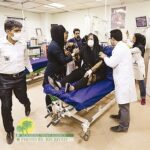
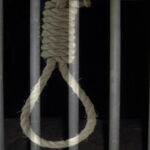
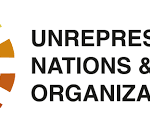




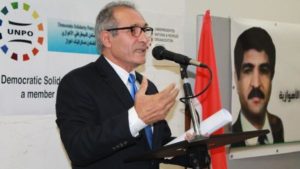
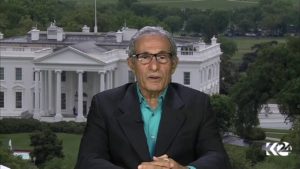
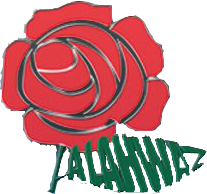
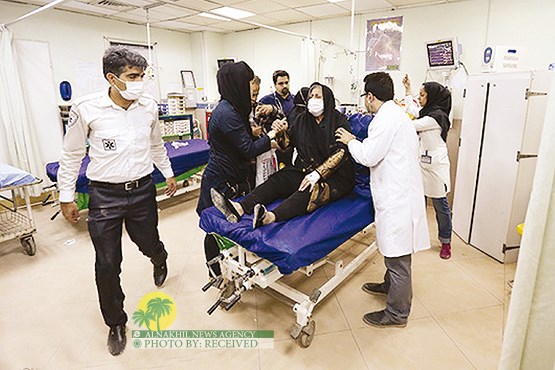




+ There are no comments
Add yours